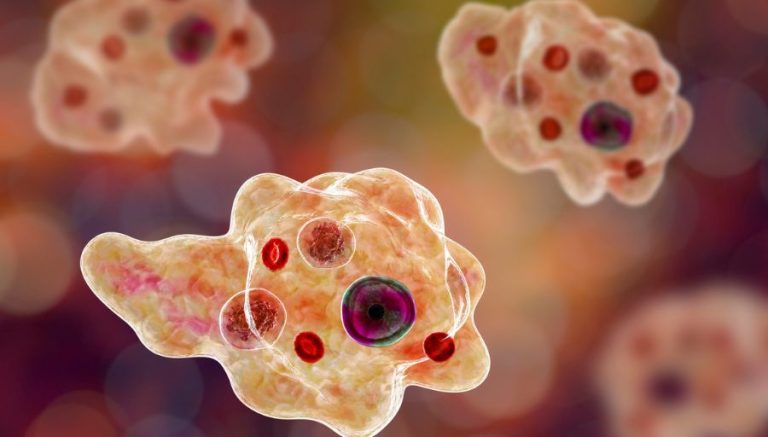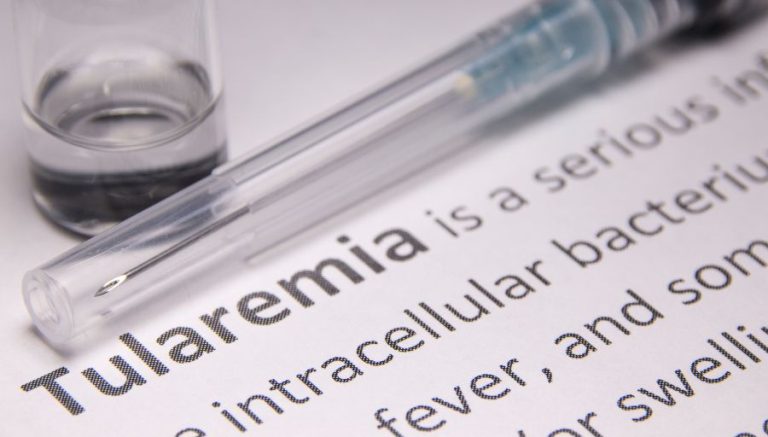Exploring Rare Manifestations of Tuberculosis: From Thyroid to Muscles and Beyond
Below we cover Tuberculosis of the thyroid gland, Tuberculosis of the heart, Tuberculosis of the spleen, Tuberculosis of muscle, and Tuberculous cerebral arteritis.
1. Tuberculosis of the thyroid gland
Tuberculosis (TB) of the thyroid glands is a rare manifestation of extrapulmonary Tuberculosis resulting from reactivation of the bacilli lodged in the area that migrated through the blood from an original infection by Mycobacterium tuberculosis and rarely by Mycobacterium bovis.
1.1 Symptoms
A patient with TB of the thyroid gland may have a hoarse voice and experience;
- difficulty swallowing (dysphagia);
- night sweats;
- fever;
- weight loss;
- pain and inflammation in the organ system affected;
- difficulty breathing (dyspnea); and, rarely,
- recurrent laryngeal nerve paralysis.
1.2 Diagnosis
Providers diagnose the condition based on blood tests, a tuberculin skin test, and previous history of Tuberculosis or active disease.
Ultrasound, CT, or MRI may detect granulomas or tuberculomas. Definitive diagnosis is made by fine needle aspiration cytology (FNAC) and histological examination of acid–fast bacilli specimens.
1.3 Treatment
Treatment includes standard antituberculous chemotherapy, starting with isoniazid, rifampin, rifabutin, pyrazinamide, and ethambutol; other drugs may be tried if these drugs are ineffective. At times, adjunctive steroid therapy helps treat symptoms of swelling and inflammation. The provider may perform surgery to treat abscesses.
2. Tuberculosis of the heart
Tuberculosis (TB) of the heart is a rare type of extrapulmonary Tuberculosis that affects heart muscles and coronary arteries, resulting from reactivation of the bacilli lodged in the area that migrated there through the blood from an original infection by Mycobacterium tuberculosis and rarely by Mycobacterium bovis.
Tuberculosis of the heart covers:
- Tuberculous cardiomyopathy
- Tuberculous endocarditis
- Tuberculous myocarditis
- Tuberculous pericarditis
2.1 Symptoms
A patient with TB of the heart may experience cardiac symptoms such as;
- rapid breathing;
- abnormal blood pressure;
- chest pain;
- edema (swelling due to fluid retention);
- fever; and
- weight loss.
2.2 Diagnosis
Providers diagnose the condition based on a tuberculin skin test and previous history of Tuberculosis or active disease. MRI or CT scans and ECG may be helpful. Definitive diagnosis is made by histological analysis of tissue biopsy samples for acid–fast bacilli (AFB).
2.3 Treatment
Treatment includes antituberculous chemotherapy with isoniazid, rifampin, rifabutin, pyrazinamide, and ethambutol; other drugs may be tried if these drugs are ineffective. In severe cases, surgical therapy is indicated. This condition has a high mortality.
3. Tuberculosis of the spleen
Tuberculosis (TB) of the spleen is a rare type of extrapulmonary Tuberculosis that affects the spleen resulting from reactivation of the bacilli lodged in the area that migrated through the blood from an original infection by Mycobacterium tuberculosis and rarely by Mycobacterium bovis.
3.1 Symptoms
A patient with TB of the spleen (an abdominal organ that produces and removes blood cells) may experience abdominal pain and other typical symptoms of TB, such as fever and weight loss.
3.2 Diagnosis
Providers diagnose the condition based on enlargement of the spleen on physical examination, a tuberculin skin test, and a previous history of Tuberculosis or active disease.
MRI or CT scans may show an enlarged spleen with distinct nodules or hypodense areas. Definitive diagnosis is made by histological analysis of tissue biopsy samples for acid–fast bacilli (AFB).
3.3 Treatment
Treatment includes antituberculous chemotherapy with isoniazid, rifampin, rifabutin, pyrazinamide, and ethambutol; other drugs may be tried if these drugs are ineffective. In severe cases, surgical therapy is indicated. This condition is scarce and, hence, difficult to diagnose.
4. Tuberculosis of muscle and Tuberculous cerebral arteritis
Tuberculosis of muscle and Tuberculous cerebral arteritis refers to infection by Mycobacterium tuberculosis, which enters through the respiratory system; the bacilli (rod–shaped bacterium) migrate to other organ systems through the lymph system or blood circulation and form granulomas (inflammatory masses of cells), which can remain dormant for long periods but eventually rupture and infect the involved organ.
4.1 Symptoms
A patient with TB at other sites experiences various symptoms depending on the sites involved. The formation of granulomas or tuberculomas (tuberculous “tumors”) can result in fibrosis (thickened and scarred connective tissue), leading to obstruction due to stricture or stenosis (narrowing of a tubular structure).
The patient may experience other typical symptoms of TB, such as night sweats, fever, weight loss, and pain and inflammation in the organ system affected.
4.2 Diagnosis
Providers diagnose the condition based on blood tests, a tuberculin skin test, and previous history of Tuberculosis or active disease. MRI or CT may detect granulomas or tuberculomas.
4.3 Treatment
Treatment includes standard antituberculous chemotherapy, starting with isoniazid, rifampin, rifabutin, pyrazinamide, and ethambutol; other drugs may be tried if these drugs are ineffective.
At times, adjunctive steroid therapy helps treat symptoms of swelling and inflammation. The provider may perform surgery to treat abscesses, tuberculomas, and strictures or obstructions.









